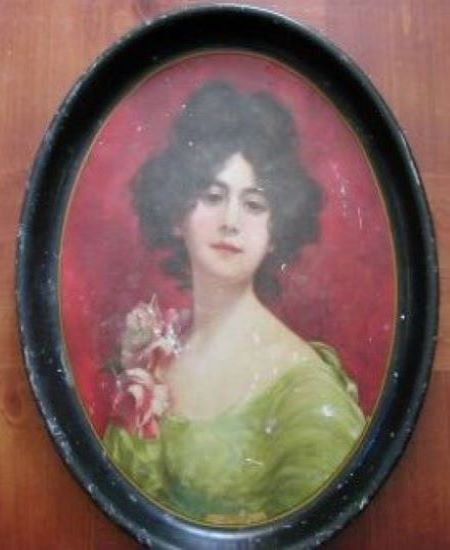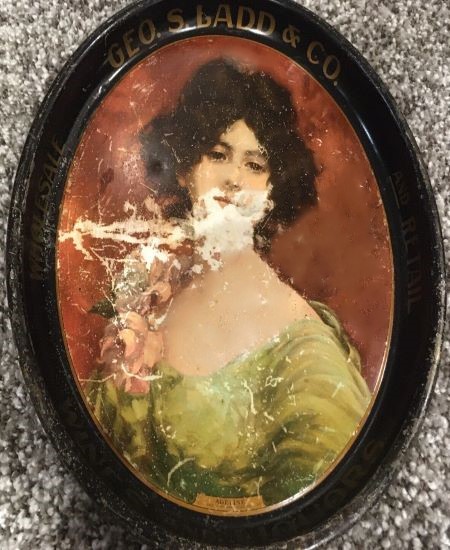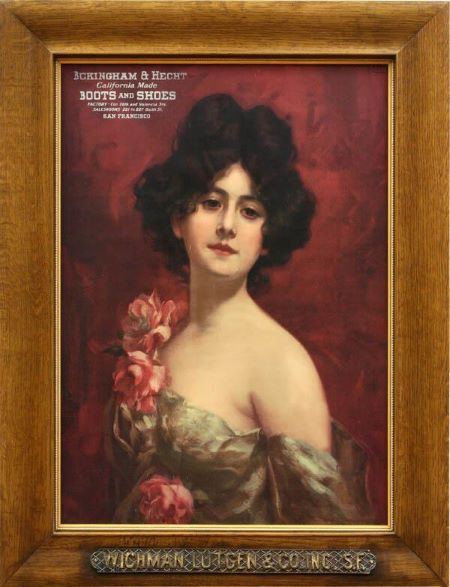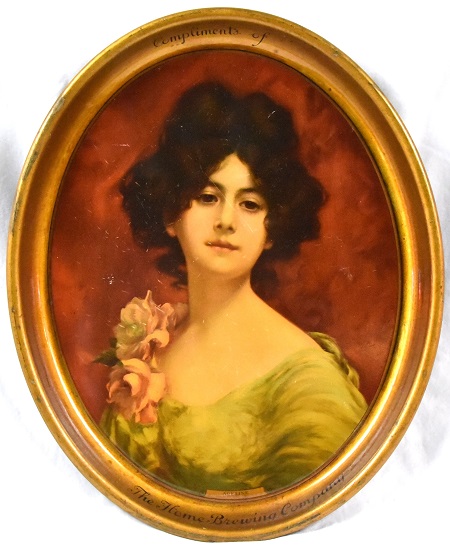The 'Stock' Exchange
American Art Works: No. 137 "Adeline"
American Art Works: No. 137 "Adeline"
Date: 1913 to 1917
Size: 12.75" x 16.25"
Type: Pie
Scarcity: Rare
Value: $$$ to $$$$
Condition & Brewer Dependent
Size: 12.75" x 16.25"
Type: Pie
Scarcity: Rare
Value: $$$ to $$$$
Condition & Brewer Dependent


General Comments
The name Adeline is of French and German origin and means "noble, nobility." It derives from the French name Adele, which comes from the Germanic root "adal," meaning “noble.” Adeline made its way from Germany to England and Norway in the 11th century and was very popular during the Middle Ages; however, it decreased in popularity during Victorian and gothic times. Only recently gaining popularity again, Adeline reappeared on the map after the song "Sweet Adeline" topped the charts. Sweet Adeline" is a ballad best known as a barbershop standard.
The name Adeline is of French and German origin and means "noble, nobility." It derives from the French name Adele, which comes from the Germanic root "adal," meaning “noble.” Adeline made its way from Germany to England and Norway in the 11th century and was very popular during the Middle Ages; however, it decreased in popularity during Victorian and gothic times. Only recently gaining popularity again, Adeline reappeared on the map after the song "Sweet Adeline" topped the charts. Sweet Adeline" is a ballad best known as a barbershop standard.
Confirmed Brewer used Stock Trays
Non-Beer Related & Non-Tray Uses
It was first published in 1903, with lyrics by Richard Husch Gerard to music by Harry Armstrong, from a tune he had written in 1896 at the age of 18. According to a 1928 newspaper story, the lyrics were inspired "by a girl who worked at the music counter of a New York department store." After failing to find a publisher with the initial title, "You're the Flower of My Heart, Sweet Rosalie", according to a story the two decided a new title was in order and were inspired by a poster advertising the farewell tour of opera singer Adelina Patti (above right). It did not become a hit until it was performed in 1904 by the group The Haydn Quartet. The name was reasonably popular from the 1880s through the mid-1920s before dropping precipitously in the 1930s. According to Social Security Administration data, Adeline has only recently regained popularity, landing in the top 100 for the first time in 2016.
We have to admit that in our early days we may have confused “Adeline” (No. 137) with “Minetta” (No. 93), as both women appear to be based on the same model with essentially the same hairstyles and similar poses.
We have to admit that in our early days we may have confused “Adeline” (No. 137) with “Minetta” (No. 93), as both women appear to be based on the same model with essentially the same hairstyles and similar poses.
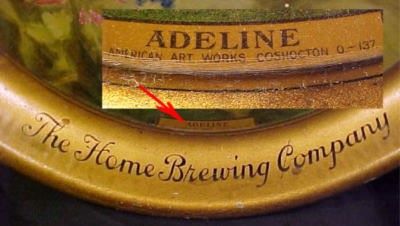
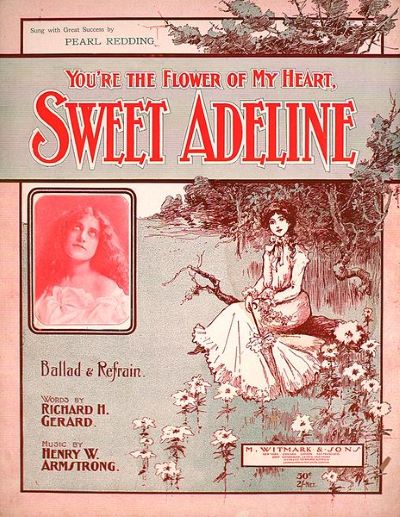
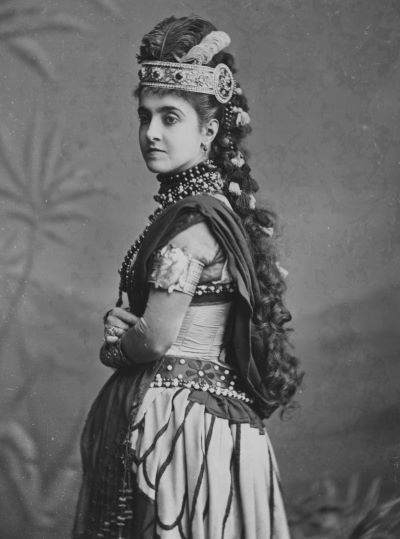
Differences emerge when considered side-by-side including the size/style of the tray (full-size), the background color, the color and style of the dress, and “Adeline’s” lack of a rose in her hair.
Like “Minetta” (No. 93), “Adeline” seems to occur most frequently as a tip tray, which interestingly is oriented as a mirror image of the full-size design and frequently has a sort of floral art nouveau overlay printed on it. And here is where things get interesting—those tip trays have a Meek company logo and a 1903 copyright date, as well as the No. 6 (remember that tip trays had their own numbering scheme). “Minetta” tip trays have a No. 21. So what is going on here? Our working theory until more information comes to light is that the original artwork was acquired in 1903 (when it was copyrighted), but not used until the company started producing stock tip trays by which time, they’d changed their name to The Meek Company. They did not produce a full-size tray at that time but for some reason resurrected the design as a full-size tray in 1913.
Size, Shape and Advertising Placement
The full-sized tray is the new, narrower oval shape with steep rims, which are usually black with gold advertising text and occasionally gold edges. There are examples with gold rims and black advertising text. Aside from tip trays, there are also examples of an oval sign, a paper lithograph, and a celluloid pocket mirror.
Hager & Price
Hager stopped commenting on individual trays after No. 136, but “Adeline” is missing from his date of introduction table, although he does include her in his catalog. Unfortunately we can’t claim to have reliable price data given our early confusion with “Minetta.” Surprisingly the one confirmed data point we have for a brewer is a slightly better than average example from The Home Brewing Co. of Indianapolis, IN, barely achieved triple figures.
Like “Minetta” (No. 93), “Adeline” seems to occur most frequently as a tip tray, which interestingly is oriented as a mirror image of the full-size design and frequently has a sort of floral art nouveau overlay printed on it. And here is where things get interesting—those tip trays have a Meek company logo and a 1903 copyright date, as well as the No. 6 (remember that tip trays had their own numbering scheme). “Minetta” tip trays have a No. 21. So what is going on here? Our working theory until more information comes to light is that the original artwork was acquired in 1903 (when it was copyrighted), but not used until the company started producing stock tip trays by which time, they’d changed their name to The Meek Company. They did not produce a full-size tray at that time but for some reason resurrected the design as a full-size tray in 1913.
Size, Shape and Advertising Placement
The full-sized tray is the new, narrower oval shape with steep rims, which are usually black with gold advertising text and occasionally gold edges. There are examples with gold rims and black advertising text. Aside from tip trays, there are also examples of an oval sign, a paper lithograph, and a celluloid pocket mirror.
Hager & Price
Hager stopped commenting on individual trays after No. 136, but “Adeline” is missing from his date of introduction table, although he does include her in his catalog. Unfortunately we can’t claim to have reliable price data given our early confusion with “Minetta.” Surprisingly the one confirmed data point we have for a brewer is a slightly better than average example from The Home Brewing Co. of Indianapolis, IN, barely achieved triple figures.
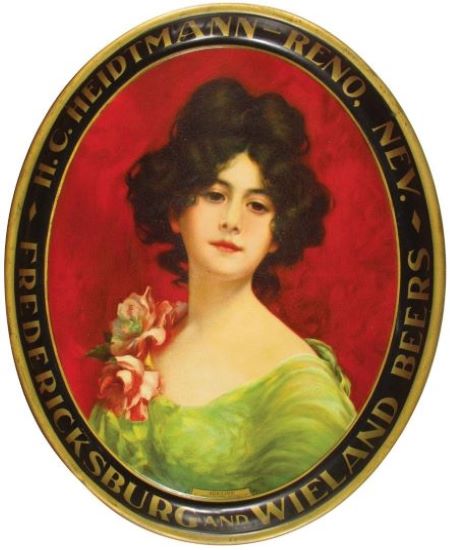
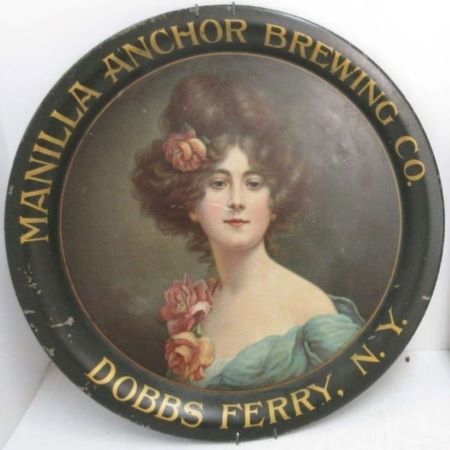
"Minetta" No. 93
"Adeline" No. 137
Click the Picture to Return to Meek & Beach Stock Catalog Page
